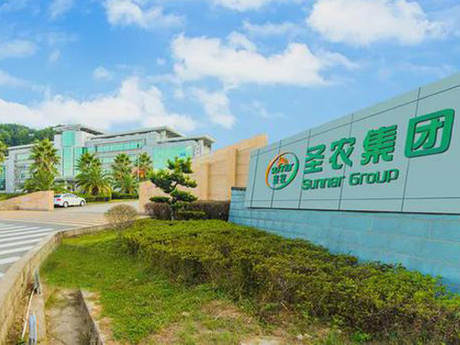Emergence
The hot blast stove as a thermodynamic machine began to be widely used in China in 1970s. It has become a replacement product of electric heat sources and traditional steam power heat sources in many industries.
Through long-term production practice, people have realized that only the use of hot air as a medium and carrier can greatly improve the heat utilization rate and thermal work effect. The traditional electric heat source and steam thermal power are often equipped with multiple circulation fans during the transportation process, so that they eventually form indirect hot air for drying or heating operations. This process obviously has a lot of shortcomings such as a lot of wasted energy and excessive accessory equipment, complicated process. The bigger problem is that this kind of heat source is helpless for the requirements of higher temperature drying or baking operations.
Application range
1. Preparation and drying of chemicals, chemical products and pharmaceuticals in the chemical and pharmaceutical industries
2. Baking paint and powder curing of automotive, motorcycle, container, home appliance, tin can and the other industrial products in the coating industry
3. Textile printing and dyeing and non-woven fabric industry Heat setting, hot melt dyeing, baking, hot air stentering
4.Molding sand and core drying in foundry industry
5. Drying of abrasive cloth and grinding wheel in abrasives and abrasive industry
6.Wood drying, building board, laminate drying, gypsum board drying, glass fiber products drying in building material industry
7. Drying of agricultural products, feed and food processing roast coffee, tea, tobacco leaves and vegetables, grains, noodles, aquatic products, fish meal, soybean meal, and etc.
8.Heating engineering, heating of industrial plants and civil buildings
9.Welding materials industry: welding rod and flux drying
10.Drying of insulation materials, glass fiber reinforced plastic industry, aluminum silicate fiber products, rare earth insulation, glass fiber reinforced plastic products
Working principle
● Direct high-purity hot blast stove
The fuel is directly burned, and the hot air is formed through high purification treatment, and it is directly contacted with the materials to be heated and dried or baked. The fuel consumption of this method is less about half then steam or other indirect heaters. Therefore, the direct high-purity hot air can be used without affecting the quality of the dried product.
● Fuel can be divided into
① Solid fuels such as coal and coke.
② Liquid fuel, such as diesel, heavy oil
③ Gas fuel, such as coal gas, natural gas, liquid gas.
The high-temperature combustion gas obtained after the combustion reaction of the fuel is further contacted with the outside air. After being mixed to a certain temperature, it directly enters the drying room or baking room, contacts with the material to be dried, heats and evaporates moisture, thereby obtaining a dried product. In order to utilize the combustion reaction heat of these fuels, a set of fuel combustion devices must be added. Such as: coal burners, oil burners, gas burners, and etc.
Indirect hot blast stove
It is mainly suitable for drying materials that are not allowed to be contaminated, or for drying heat-sensitive materials with lower temperature. Such as: milk powder, pharmaceuticals, synthetic resins, fine chemicals, and etc. This type of heating device uses steam, thermal oil, flue gas, and etc. as a carrier to heat air through various forms of heat exchangers.
The most essential problem of indirect hot blast stove is heat exchange. The larger the heat exchange area, the higher the heat conversion rate, the better the energy saving effect of the hot blast stove, and the longer the life of the furnace body and heat exchanger. Conversely, the size of the heat exchange area can also be identified from the flue gas temperature. The lower the smoke temperature and the higher the heat conversion rate, the larger the heat exchange area.
Indirect hot stove classification
Working principle can be divided into regenerative and heat exchange.
The regenerative type is divided into a ball type hot air furnace (referred to as a ball furnace) and a hot air furnace using lattice bricks according to the heat storage body inside the hot air furnace. According to the combustion method, it can be divided into top combustion type, internal combustion type, external combustion type and so on. How to increase the wind temperature is the direction of long-term research in the industry. Common methods are to mix high calorific value gas, or increase the heat exchange area of the grid brick of the hot blast stove, or change the material and density of the grid brick, or change the shape of the heat storage body (such as heat storage ball), and use various methods to convert the gas And combustion air preheating.
Advantages: high heat exchange temperature and high heat utilization rate.
Disadvantages: large size, large battlefield area, unstable hot air temperature, many switching mechanisms, prone to problems, short heat storage body life, high maintenance cost, and extremely high purchase cost.
Heat exchange type, mainly using high temperature heat exchanger as the core component, this component can not use ceramic hot air furnace metal heat exchanger, only high temperature ceramic heat exchanger can be used, the gas is fully burned in the combustion chamber The hot air passes through the heat exchanger and exchanges the heat with fresh cold air, so that the temperature of the fresh air can reach more than 1000 degrees.
Advantages: high heat exchange temperature, high heat utilization rate, small volume, stable hot air temperature, no switching mechanism, long life, high maintenance cost, low purchase cost.
Disadvantages: The heat exchange temperature is not as high as the regenerative type, it appears later, and it is not widely used.


















